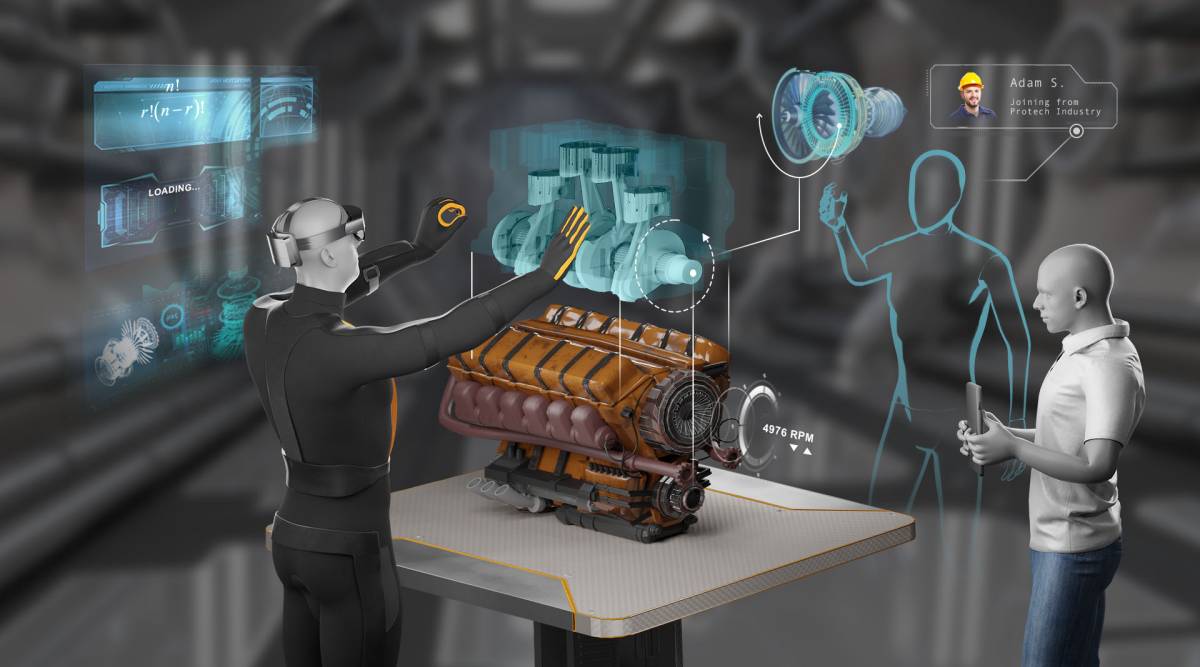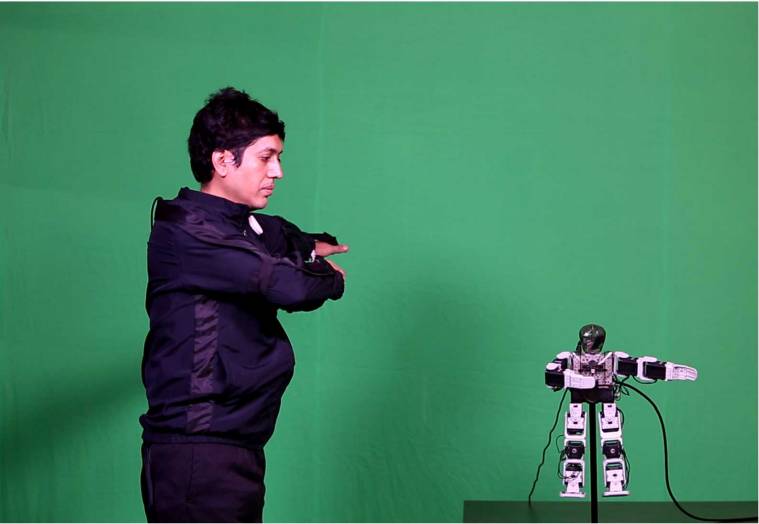 Holosuit is a bi-directional suit, which is made in India and connects users with the digital world. (Image credit: Holosuit)
Holosuit is a bi-directional suit, which is made in India and connects users with the digital world. (Image credit: Holosuit) When one thinks of hardware devices that will help power experiences in the much-touted ‘Metaverse’, products such as Microsoft’s HoloLens or Facebook’s Oculus headset come to mind. But Singapore-based Holosuit is hoping to change that narrative.
The company’s bi-directional flagship Holosuit has over 40 embedded sensors across arms, legs, and all ten fingers, and is made using mesh material. The suit itself is manufactured in Mysuru India by Kaaya Virtualisation Tech and capable of tracking a user’s entire array of movements from the head to the toes and playing them out in a digital world.
But how does it really work? “We are able to get a digital twin of the body given our sensors and technology. Then when this body interacts in the digital world, let’s say like it gets shot by somebody there, then one will actually feel it. Or if somebody is touching you or if you are holding something in the digital realm, you feel it thanks to the Holosuit. So that is why it is a bi-directional device,” founder and CEO Harsha Kikkeri tells indianexpress.com over a call.
The suit is already being deployed by the Indian Army. The Holosuit founder says that when the personnel wears the suit, “whatever motions are happening in the real world are being reflected back to the virtual world for better tracking, training.” For example, if a terrorist comes and fights in the virtual world, they’ll feel that shot in their suit.
 The Holosuit is being used in various training scenarios. (Image credit: Holosuit)
The Holosuit is being used in various training scenarios. (Image credit: Holosuit) “We are actually training the largest electricity board in India to train their workers on how to avoid electrical hazards. We have already exported it to the South Korean Army as well. Even Softbank has bought it,” says Kikkeri, adding that they want to “merge these two kinds of realities: the virtual reality as well as the physical reality,” with the help of their hardware.
In games such as golf or cricket, the Holosuit can be used to track a player’s movement and then have them digitised. Or it can let players engage with a digital version of cricket, where they actually feel each and every action that takes place in the game, even when a ball hits them on the chest.
So far, Holosuit has been shipped to over 19 countries, from Germany to Israel to Japan. The company has 12 patents in eight countries including Japan, Australia, Russia and India.
#IndianArmy#ARTRAC#Holosuit based #VR #Tactical training with #Myriad of #Intelligent #Enemies, #Obstacles and #Geo Specific #Terrains for #Training on Tactical Operations using VR HOLOSUIT and Haptic Devices developed by #SDD, @Secunderabad.@adgpi pic.twitter.com/70WOHIgUst
— Army Training Command,Indian Army (@artrac_ia) September 17, 2021
While the Holosuit can be bought as a whole, the company is also selling the individual parts such as the gloves, jacket, the Holosuit pants depending on the client’s requirements, though this is not a mass consumer product. The cost itself can range from a few hundreds of dollars to hundreds of thousands of dollars depending on the customisation needs of the particular client.
But Kikkeri, who previously worked as a researcher in Microsoft’s Robotics division and spent years building robots, does not plan to limit the company’s vision to just the Holosuit.
 A robot’s movements are controlled using the Holosuit. The founder Harsha Kikkeri is wearing the suit. (Image credit: Holosuit)
A robot’s movements are controlled using the Holosuit. The founder Harsha Kikkeri is wearing the suit. (Image credit: Holosuit) In fact, the company has its own robot too, RobotYantra, which is being used by Ericsson. For education, it is hoping that the HoloProjector — which is currently being used in GSSS university in Mysore– could enable 3D learning for students.
With the HoloProjector, the company has taken a combination model where it can work with a PC or a laptop as well. The teacher can actually interact with the projection in 3D, which shows the diagram or object as a hologram. Interestingly, the HoloProjector platform itself can work with a regular projector too, though it would of course not support the 3D holographic projections.
The reason for this kind of support is not just to build hardware. Instead, the focus is on building end-to-end experiences. Kikkeri knows interoperability will be key in the ‘metaverse’ and says they want to build experiences that can work regardless of the hardware being used. “Our own hardware will of course light up those experiences,” he adds.
When asked about the biggest challenges he sees to the realisation of a metaverse and whether it would need regulation, Kikkeri feels that regulation too soon could hamper innovation. He’s also upbeat that these interactions will be here sooner than most skeptics would think, but believes that building the entire ecosystem will need support.
“The ecosystem has to be developed and we need to focus on inventing and designing in India as well, rather than just make in India,” he stresses, adding that they are also focusing on new inventions in manufacturing in India in order to scale up.
- The Indian Express website has been rated GREEN for its credibility and trustworthiness by Newsguard, a global service that rates news sources for their journalistic standards.

